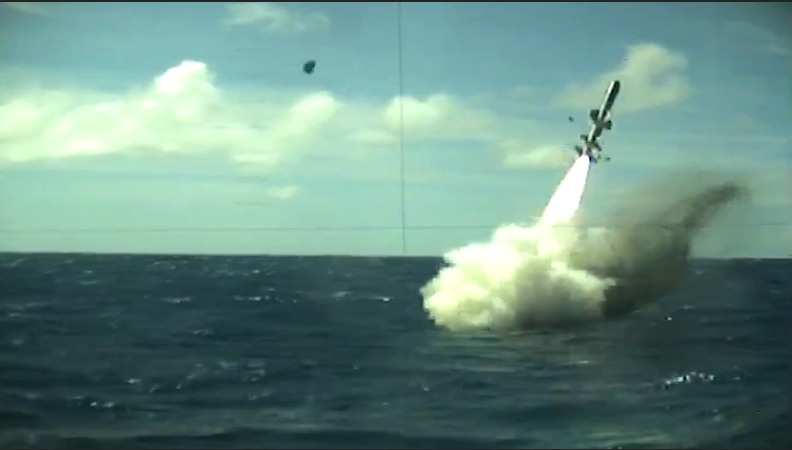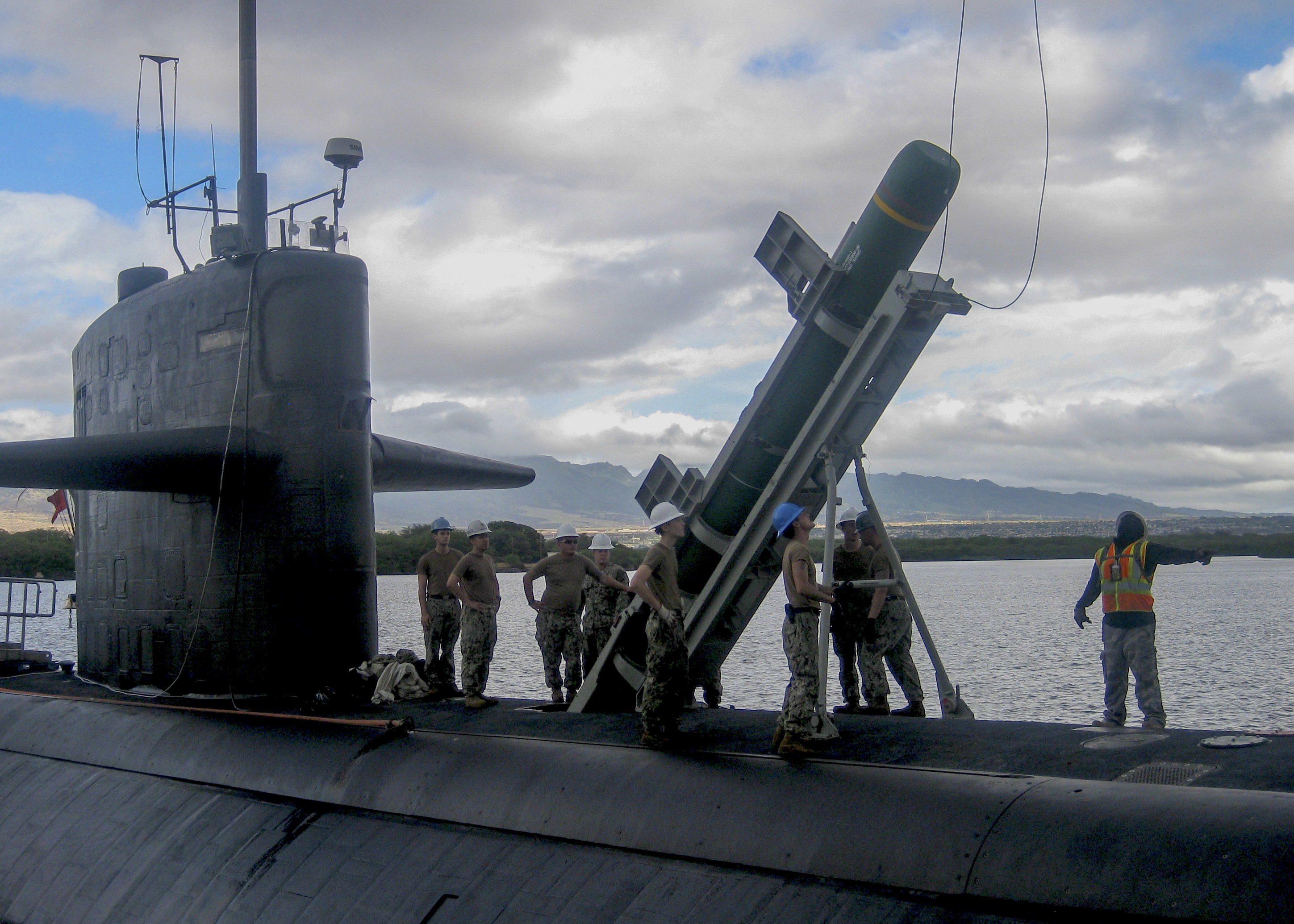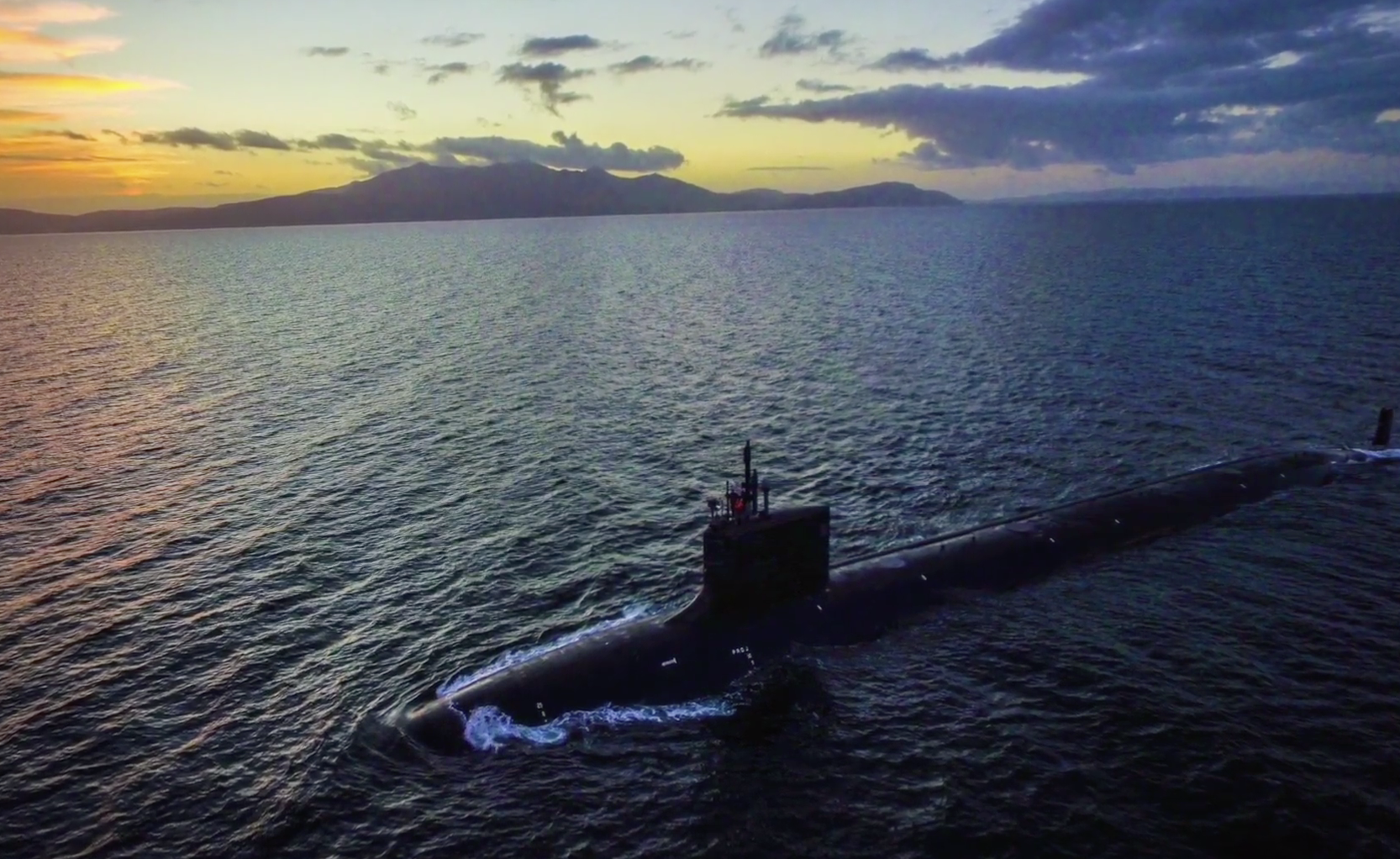
ARLINGTON, Va. – The undersea warfare community wants to boost attack sub lethality by providing new payloads for the Virginia-class SSNs, especially ones that can be leveraged through the Virginia Payload Module missile tubes that will be added to new-construction boats beginning this year.
Program Executive Office for Submarines Executive Director George Drakeley said at the two-day annual Naval Submarine League symposium last week that, when the Navy was first pitching the idea of adding the VPM missile tube capacity to SSNs, “we were only really allowed to talk about it as a replacement for SSGN (Ohio-class guided-missile submarine) strike; we weren’t able to talk about other missions. And most of you here as submariners and warfighters could think of a lot of things you could do with a VPM. Well, the handcuffs are off now, and lately we’ve been talking about other capabilities.”
“We’re in a great power competition now, and so we need to be focusing on other potential capabilities,” he said, citing Russia and China as adversaries that needed to be kept in mind while developing these new payloads.
Rear Adm. John Tammen, director of undersea warfare on the chief of naval operations’ staff (OPNAV N97), said at the event that “we have to get past the days of just ADCAP (advanced capability Mk 48 heavyweight torpedo) and TLAM (Tomahawk land-attack missile) as being our two principle weapons.”
Also addressing the Russian and Chinese advancements in the undersea warfare realm, Tammen said, “there will be no adversary that gets a free ticket to hunt us. … We brought back Harpoon (anti-ship missile) so we can give the commanding officers this engagement-breaking weapon that they have in case they’re being hunted by a surface vessel. That said, we’re looking at all domains to make sure no one gets that free ticket.”
The Navy is looking at both new missiles as well as unmanned undersea vehicles being potential payloads that could be deployed from the VPM tubes.

On the weapons side, Tammen told USNI News after his presentation that the surface warfare community is developing a next-generation land-attack weapon (NGLAW) that is currently going through an analysis of alternatives. Though the surface warfare directorate (OPNAV N96) is overseeing the program, the undersea warfare directorate would look at adapting the weapon to be used from the VPM, providing another land-attack option beyond TLAM.
UUVs are another attractive option to deploy from the VPM, but Tammen told USNI News the Payload Handling System that would move the UUVs from inside the submarine into the VPM tubes is still a challenge and funding has not yet been secured.
The admiral said the UUV-VPM pairing relies on “a payload handling system, which will allow you to take a UUV vertical and then into the tube. Now the challenge right now is with chemical batteries you can’t take some of our vehicles vertical, so we have to get lithium ion or some other technology to allow us to go vertical, and then that should coincide with when we have the payload handling system.” He said funding for the handling system is pre-decisional and in the works now.
Tammen told the crowd during his presentation that “when we originally sold the Virginia Payload Module it was to reconstitute the TLAM strike inventory that we’re losing with Ohio-class SSGNs. We have to make sure that [U.S. Pacific Command] and [U.S. European Command] have the TLAMs they need to carry out their war plans,” but he added OPNAV N97 will “continue to give options to the commanders in terms of payloads for those tubes.”
Drakeley noted during his speech that, in addition to talk about using VPMs for innovative purposes, PEO Subs is also continuing to work on new torpedoes to add new capability to attack subs.
The PEO is “doing a whole lot of work on lethality. We’ve had the same torpedoes, both heavyweight and lightweight, in the inventory it seems like forever. We haven’t really had any new torpedoes since before I came into the submarine community, so we’re working on that,” he said.

In the longer term, Block VI and VII Virginia-class SSNs will have a chance to bring in more capability, as well as the eventual “New SSN” program, which the submarine community had previously called SSN(X).
“One of the items that’s being looked at on Block VI is SOF (Special Operations Forces) optimization,” Virginia-class program manager Capt. Chris Hanson said during a panel discussion.
“We look for capabilities to help the synergy with unmanned undersea vehicles, and it will also give us the ability to move forward in the realm of seabed and subsea warfare,” Tammen said of Block VI and VII boats.
After Block VII, Tammen said, there will be no margin left for added speed or acoustic management, and “we’ll have to transition to the next block, which is New SSN. New SSN is going to be where we put the fast back in fast attack.” The Navy is currently thinking about how much capacity the sub will need to carry various payloads, how big to make the hull, what kind of propulsion system to use, and more.
“We’ve started the intellectual pushups to make sure that we’re ready to go define the tradespace for the next SSN – hull size, ship length, diameter, what goes in that. Let’s define an envelop, we’re working on it,” Naval Reactors director Adm. Frank Caldwell said at the symposium.





